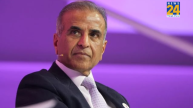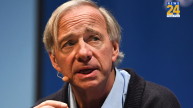Savings vs. FD Rates: A noticeable shift is occurring in the banking sector these days. People are increasingly turning to Fixed Deposits (FDs) instead of relying on their savings accounts. While the demand for savings accounts was prevalent in the past, there’s now a growing inclination towards FDs. In terms of statistics, the past year has witnessed a substantial 25.8 per cent growth in new FDs, coupled with a notable 12 per cent decline in the growth rate of savings accounts.
So, what’s driving this change?
The primary driver behind this shift is the interest rates. On average, savings accounts offer interest rates between 2.5-3 per cent, whereas FDs provide significantly higher interest rates ranging from 6.5 to 7 per cent. Therefore, FDs have regained their popularity among the public.
Is this trend affecting specific banks?
This trend is not limited to a few banks; it appears to be widespread across the banking sector. ICICI Bank, for instance, reported a 6.2 per cent increase in savings accounts opened over the past year, while FDs grew at an impressive rate of 25.8 per cent. Moreover, there has been a decline in current accounts, with the growth rate dropping from 17 per cent to 14.8 per cent.
What does this mean for banks?
This trend bodes well for banks. When cash remains deposited with banks for longer durations, it becomes easier for them to provide loans in the future, which is essential for their interest revenue. It’s possible that store costs for the banks may increase, but this shouldn’t pose significant challenges.
How long can we expect this trend to continue?
This trend is likely to persist until the next monetary policy decision by the Reserve Bank of India (RBI). The RBI has maintained the repo rate without changes in its last four policy updates, restricting the flexibility of banks. However, the situation may evolve as soon as there’s an alteration in the repo rate.
Also Read: Brajesh Pathak Adds Servant Before His Name On X; Know Why













